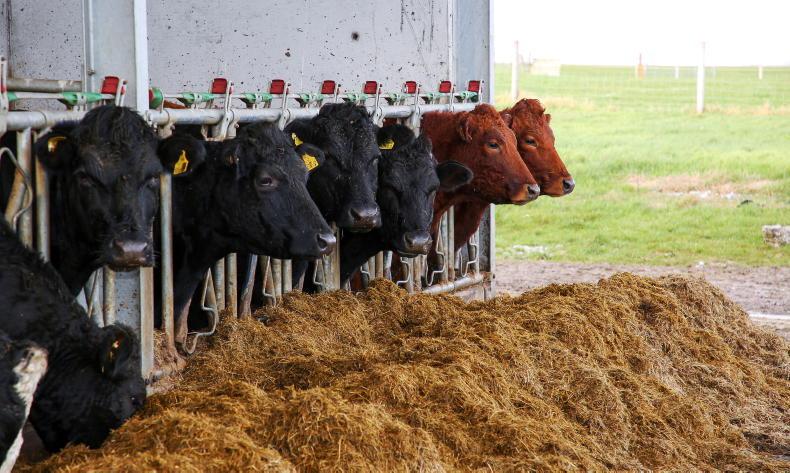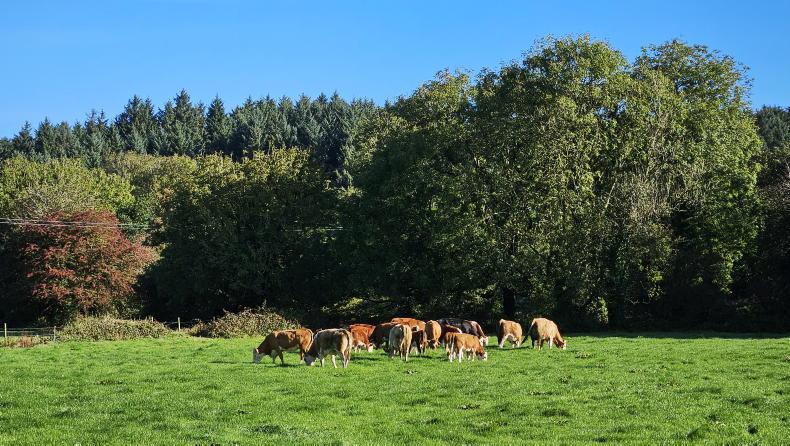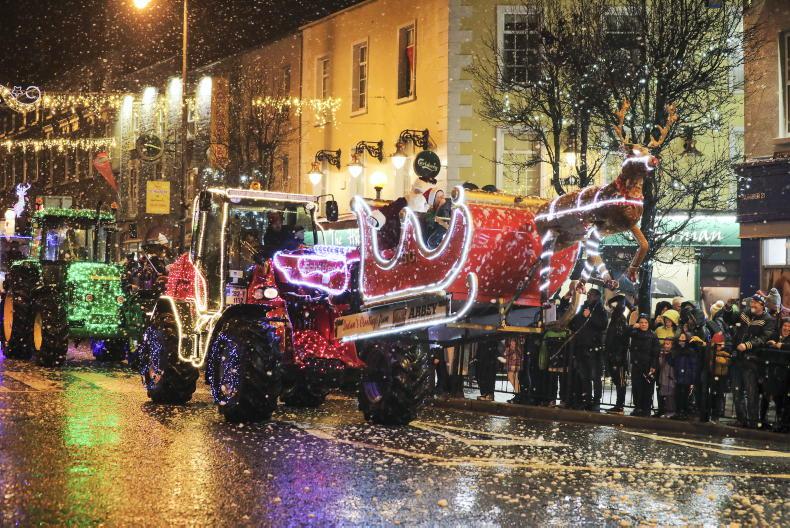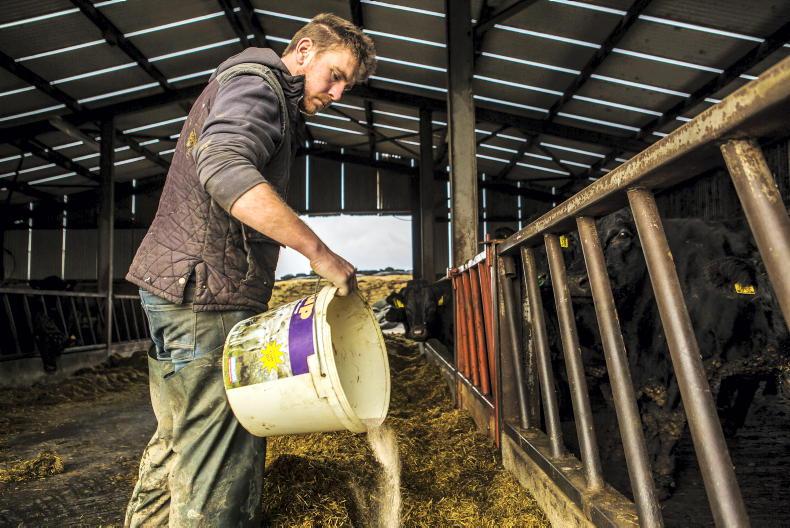Once the calf is born, the focus turns to getting this animal off to the best possible start in life.
When a calf gets into difficulty during labour, they need assistance once they have been delivered.
Being able to resuscitate a calf properly is a vital skill that comes with experience.
Providing good aftercare should not be all about the calf. The cow may also need some attention.
Outlined are some tips for resuscitating calves and providing good care after calving.
1 Clear the airways and sit the calf upright
Once the calf is born, remove any remnants of the water bag from the head, check the airways are clear and that there is no mucus in the mouth that poses a choking risk.
Sticking straw up the nose will make the calf recoil and stimulate breathing. Alternatively, rub the rib cage by hand.
The calf should also be placed in an upright lying position with front legs either side of the chest and below the body.
This broadens the chest, opens up the lungs and helps air intake. Do not leave a calf with breathing problems lying on its side.
In this position, the calf’s front legs will be crossed, which constricts the chest and airways, making breathing more difficult.
2 Splashing cold water on the calf
If the calf is still struggling, the next step is splash cold water in the calf’s ears. This helps to ‘shock’ the calf into waking up.
Always splash cold water on the calf by hand. Do not pour a bucket of cold water on the calf, or dunk it in water. This only lowers the calf’s core body temperature and makes the situation worse.
If the cow cannot get up and lick the calf dry, then a calf soaked in cold water is at risk of hypothermia.
3 Do not hang the calf over a gate or by the hind legs
When a calf is born backwards, or there is a rattle in the lungs, some farmers start swinging the calf by its hind legs, or hang the animal over a gate to ‘drain’ any fluid inhibiting breathing.
Avoid this practice at all costs. Hanging a calf upside down means its internal organs and body weight presses on the lungs, restricting air capacity.
Also, the calf’s front legs will be close together and stretched out, further narrowing the airway, which is counterproductive.
There will be fluid coming from the calf’s mouth when it hangs upside down. But this is normally from the stomach, not the lungs.
4 Raise the back legs by hand
If there is fluid in the lungs, raise the calf’s back legs a couple of feet off the ground by hand. Wait 20 to 30 seconds, then lower and repeat as necessary.
The calf’s front legs and chest should remain on the ground, supporting the animal’s body weight.
An alternative is to raise the back legs on the calving jack, again no more than waist high. This frees up both hands to rub the calf and stimulate breathing.
5 Give pain relief to the calf
After a heavy pull using the jack, the animal is likely to be in pain and discomfort. Pain relief can be beneficial to help with a newborn animal’s recovery and get it standing on its feet. Check with your vet about which product to use and ensure a safe dosage is administered.
6 Use a calf jacket or heat bulb
With a weak calf that is slow to stand and feed, it is important to raise the animal’s body temperature as quickly as possible.
Calf jackets are a great way to warm the calf and allow it to stay with its mother. Heat bulbs are also helpful, but the calf will need a corner cordoned off from the cow to stop the bulb being damaged.
7 Early colostrum and energy aids
Getting colostrum into the calf as early as possible provides energy, helping the calf’s recovery.
If the calf cannot stand to suck its mother, the next best thing is lock the cow in the calving gate and milk her.
However, milking two litres out of a suckler cow that has just experienced major trauma at calving is not realistic. But getting any volume of colostrum into the calf will help.
Frozen colostrum from another cow may be a quicker option for feeding the calf, as is a pre-mix colostrum substitute. There are also some life aids products that can give a calf an energy boost.
8 Calf has a swollen tongue
Sometime the calf’s tongue is swollen following a prolonged calving, making it harder for the calf to feed on its own. This can also impede breathing.
In this case, the calf will most likely require feeding via a stomach tube. An anti-inflammatory can help reduce swelling in the tongue, and again, discuss this with your vet.
During a hard and prolonged calving, the newborn calf is likely to experience acidosis. Basically, the calf is deprived of oxygen during labour, causing CO2 levels to build up in the blood stream.
In most cases, the calf will die during labour or shortly after it is born. Calves affected by acidosis are slow to respond, cannot hold their head up, feel cold and have a poor sucking reflex.
Raising the calf’s body temperature is vital, so place a jacket on the animal immediately or introduce a heat bulb.
Some vets recommend giving the calf a spoonful of bicarbonate of soda (bread soda) mixed with colostrum as soon as possible, as well as offering glucose.
10 Don’t forget to check on the cow
Don’t forget to check on the cow after a hard calving. Make sure the animal has no internal bleeding. Giving pain relief will help the cow stand quicker to lick the calf.
In case you missed it
If you missed any of our calving features or calving webinar, you can access them on our Knowledge Hub here.
Read more
Top tips for dealing with calving difficulties
Watch back: calving the cow and care of the calf webinar
Once the calf is born, the focus turns to getting this animal off to the best possible start in life.
When a calf gets into difficulty during labour, they need assistance once they have been delivered.
Being able to resuscitate a calf properly is a vital skill that comes with experience.
Providing good aftercare should not be all about the calf. The cow may also need some attention.
Outlined are some tips for resuscitating calves and providing good care after calving.
1 Clear the airways and sit the calf upright
Once the calf is born, remove any remnants of the water bag from the head, check the airways are clear and that there is no mucus in the mouth that poses a choking risk.
Sticking straw up the nose will make the calf recoil and stimulate breathing. Alternatively, rub the rib cage by hand.
The calf should also be placed in an upright lying position with front legs either side of the chest and below the body.
This broadens the chest, opens up the lungs and helps air intake. Do not leave a calf with breathing problems lying on its side.
In this position, the calf’s front legs will be crossed, which constricts the chest and airways, making breathing more difficult.
2 Splashing cold water on the calf
If the calf is still struggling, the next step is splash cold water in the calf’s ears. This helps to ‘shock’ the calf into waking up.
Always splash cold water on the calf by hand. Do not pour a bucket of cold water on the calf, or dunk it in water. This only lowers the calf’s core body temperature and makes the situation worse.
If the cow cannot get up and lick the calf dry, then a calf soaked in cold water is at risk of hypothermia.
3 Do not hang the calf over a gate or by the hind legs
When a calf is born backwards, or there is a rattle in the lungs, some farmers start swinging the calf by its hind legs, or hang the animal over a gate to ‘drain’ any fluid inhibiting breathing.
Avoid this practice at all costs. Hanging a calf upside down means its internal organs and body weight presses on the lungs, restricting air capacity.
Also, the calf’s front legs will be close together and stretched out, further narrowing the airway, which is counterproductive.
There will be fluid coming from the calf’s mouth when it hangs upside down. But this is normally from the stomach, not the lungs.
4 Raise the back legs by hand
If there is fluid in the lungs, raise the calf’s back legs a couple of feet off the ground by hand. Wait 20 to 30 seconds, then lower and repeat as necessary.
The calf’s front legs and chest should remain on the ground, supporting the animal’s body weight.
An alternative is to raise the back legs on the calving jack, again no more than waist high. This frees up both hands to rub the calf and stimulate breathing.
5 Give pain relief to the calf
After a heavy pull using the jack, the animal is likely to be in pain and discomfort. Pain relief can be beneficial to help with a newborn animal’s recovery and get it standing on its feet. Check with your vet about which product to use and ensure a safe dosage is administered.
6 Use a calf jacket or heat bulb
With a weak calf that is slow to stand and feed, it is important to raise the animal’s body temperature as quickly as possible.
Calf jackets are a great way to warm the calf and allow it to stay with its mother. Heat bulbs are also helpful, but the calf will need a corner cordoned off from the cow to stop the bulb being damaged.
7 Early colostrum and energy aids
Getting colostrum into the calf as early as possible provides energy, helping the calf’s recovery.
If the calf cannot stand to suck its mother, the next best thing is lock the cow in the calving gate and milk her.
However, milking two litres out of a suckler cow that has just experienced major trauma at calving is not realistic. But getting any volume of colostrum into the calf will help.
Frozen colostrum from another cow may be a quicker option for feeding the calf, as is a pre-mix colostrum substitute. There are also some life aids products that can give a calf an energy boost.
8 Calf has a swollen tongue
Sometime the calf’s tongue is swollen following a prolonged calving, making it harder for the calf to feed on its own. This can also impede breathing.
In this case, the calf will most likely require feeding via a stomach tube. An anti-inflammatory can help reduce swelling in the tongue, and again, discuss this with your vet.
During a hard and prolonged calving, the newborn calf is likely to experience acidosis. Basically, the calf is deprived of oxygen during labour, causing CO2 levels to build up in the blood stream.
In most cases, the calf will die during labour or shortly after it is born. Calves affected by acidosis are slow to respond, cannot hold their head up, feel cold and have a poor sucking reflex.
Raising the calf’s body temperature is vital, so place a jacket on the animal immediately or introduce a heat bulb.
Some vets recommend giving the calf a spoonful of bicarbonate of soda (bread soda) mixed with colostrum as soon as possible, as well as offering glucose.
10 Don’t forget to check on the cow
Don’t forget to check on the cow after a hard calving. Make sure the animal has no internal bleeding. Giving pain relief will help the cow stand quicker to lick the calf.
In case you missed it
If you missed any of our calving features or calving webinar, you can access them on our Knowledge Hub here.
Read more
Top tips for dealing with calving difficulties
Watch back: calving the cow and care of the calf webinar










SHARING OPTIONS